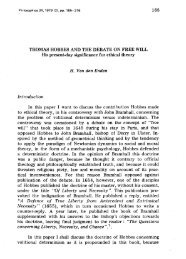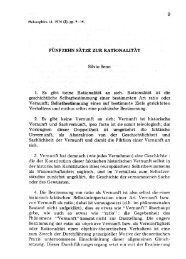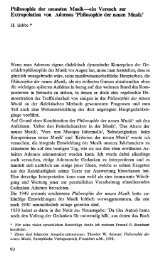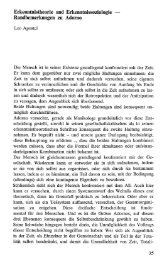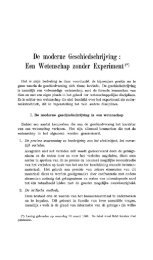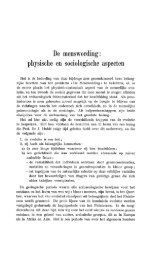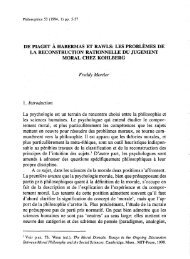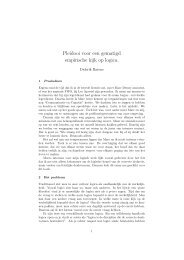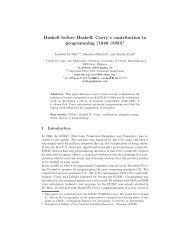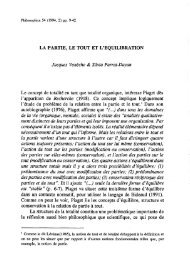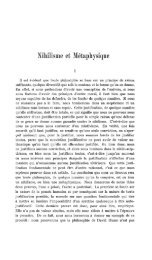CHEZ FERMAT A.D. 1637' Erkka Maula and Eero Kasanen Abstract ...
CHEZ FERMAT A.D. 1637' Erkka Maula and Eero Kasanen Abstract ...
CHEZ FERMAT A.D. 1637' Erkka Maula and Eero Kasanen Abstract ...
Create successful ePaper yourself
Turn your PDF publications into a flip-book with our unique Google optimized e-Paper software.
160 ERKKA MAULA & EERO KASANEN<br />
kable'.<br />
Moreover, if FLT fails for odd exponents, (16) <strong>and</strong> (17) with<br />
the equality signs give rise to second degree equations whose<br />
roots determine when the equilibrium holds. Let the roots be<br />
called (6*,'t*). For (16) the y are (a 2 ± a.r{1/2(b+c)2-a 2 ,2»): (b+c)<br />
<strong>and</strong> for (17) (1/./2)(a 2 ± r( (b+c)Z-a 2 ,2) ):(b+c).<br />
University of Tampere<br />
NOTES<br />
This essay is dedicated to the memory of our friends Prof.<br />
Hiromichi Takeda - the last Samurai in the fields of philosophy,<br />
<strong>and</strong> Prof. Tadao Yamada - humanist, scientist, musician. They<br />
were wonderful interpreters of the harmony of Kyoto, of the<br />
song of nature, <strong>and</strong> of the best aspects of Japan's culture.<br />
* Editor's note: In this article, an option has been taken for a<br />
linear format. Thus the n-th power of x, xn, is written p(x,n) <strong>and</strong><br />
the n-th root of x is written r(x,n). x with subscript y is written<br />
x"'y.<br />
REFERENCES<br />
The main biographical source is Mahoney [10] <strong>and</strong> the best<br />
overview of literature Ribenboim [15], with bibliographies <strong>and</strong><br />
primary sources. Fermat's Oeuvres, ed. Tannery & Henry, Paris<br />
(1891) 1922.<br />
[1] Bashmakova, loG. "Diophante et Fermat", Rev. Bist. Sei.<br />
XlX:289-306.<br />
[2] Bashmakova, l.G. & Slavutin, E.I. Istoriya diofantova analiza<br />
Dt Diofanta do Ferma, Moscow, 1984 ("Nauka").<br />
[3] Dickson, L.E. History of the Theory of Numbers II,<br />
Washington, 1920.<br />
[4] Goldziher, K. "Hâtvanyszamok Telbontâsa hâtvanyszamok 08Szegere",<br />
Kozépiskolai Math. Lapok 21:177-184 (1913); his result<br />
was rediscovered in 1952 by Mihaljinec <strong>and</strong> in 1969 by<br />
Rameswar Rao [15:69].<br />
[5] Grünert, J.A. "Wenn n > 1, so gibt es unter den ganzen<br />
Zahlen von 1 bis n nicht zwei Werte von x und y, für welche,<br />
wenn z einen ganzen Wert bezeichnet, xn+yn = zn ist", Arehiv



